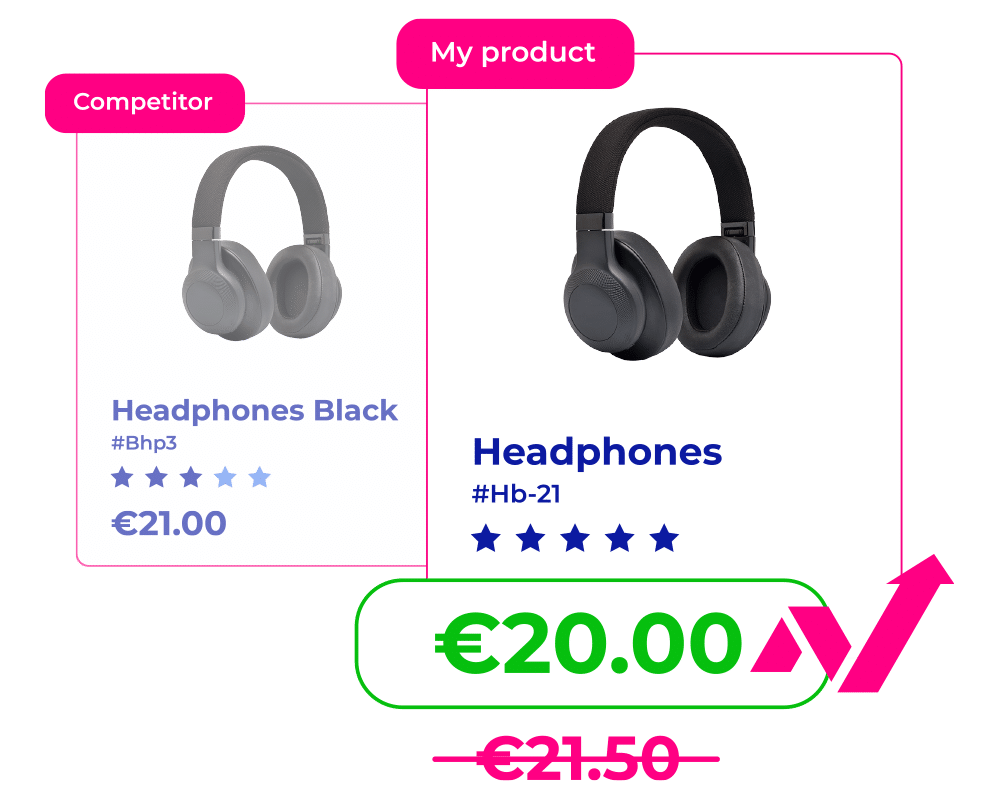Designing a price strategy is essential for your e-commerce to succeed. In order to set your prices you can look at the cost of the product, the market or the rivals. A competitor analysis will give you a global vision of your vertical and will allow you to identify pricing patterns of your competitors, so you can see what kind of pricing strategy they are implementing.
Know your position
If you want to establish your prices based on the competition you must first make an analysis of the sector. You must take into account your position in relation to the competitors, know the reason for their strategy. To do it manually would take you a lot of time and money, that is why using monitoring tools is vital to automatically and periodically track prices.
After analyzing the vertical, you will have to do the same with your rivals. A competition study -which you can do through the monitoring software– will help you to identify the performance of your rivals, their supplier relationships, if they have stock of any product you want to sell… This data will give you a very deep knowledge of your sector.
Types of strategy
In highly competitive sectors, such as fashion or electronics, many of the pricing strategies used by rivals can be found. Emerging e-commerce often uses penetration strategies, which can give them quick sales and visibility. In those cases it is not worth matching the prices, and we recommend you to take care and maintain the profit margin, because if your business does not make a profit it is useless to sell more products.
Other bigger commerce can opt for a more complex strategy such as loss-leader which consists of offering products with low prices as a way of attracting customers to draw in more consumers so that they end up buying other products with greater profitability.
Large volume e-commerce stores may choose to base their pricing strategy on a package or lot price. The popular 3×2 is a good example, although it depends on the sector, they can offer a complementary batch of products. In the hygiene products sector it is typical to see offers that include hairbrush and rubbers.
Some of the other strategies used are psychological pricing – setting a product at 19.99 euros instead of 20 euros for example – or bait pricing, which consists of setting a low price for a product that will lead the consumer to buy other related products such as a computer tower and its peripherals – keyboard, mouse, speakers, etc.
Implementing a strategy
After studying the competition and their strategies it is time to decide on one for your e-commerce. Before choosing one you should consider the three main metrics and act on them: the price index, the profit margin and the conversion rate.
Price Index
Indicates the competitiveness of your products in relation to those of the competition. The reference is 100, and you should try to have your products with a higher index than the reference.
Profit margin
It shows the profit from the sale of the product. That is the difference between the cost of acquiring a product and the final sales price. It is necessary that this metric is always positive and as broad as possible to ensure the maximum possible profit.
Conversion rate
Indicates the final sales of a product. A high rate is always good as long as it does not negatively affect the profit margin.
Taking into consideration the metrics and after establishing a pricing strategy, the next step is to update the sales value of your products according to the competition. To do that, you can modify each product one by one, a massive job or use dynamic pricing tools that update the products you have marked following some rules you have established (always have the price 2% lower than the competition, always keep a 26% profit margin…) that you can change at any time.








